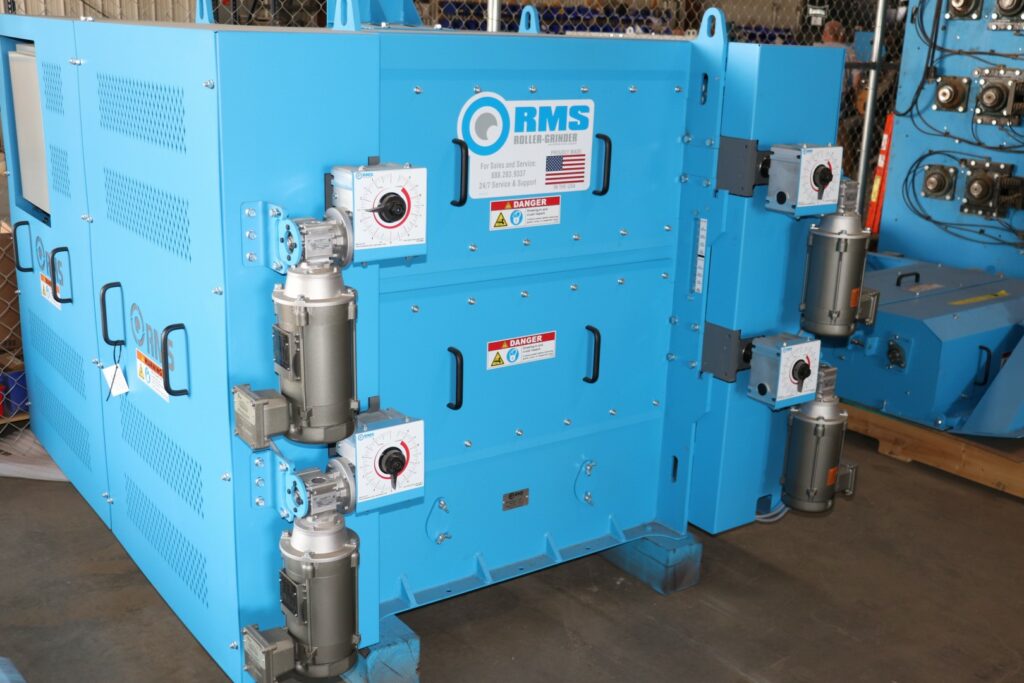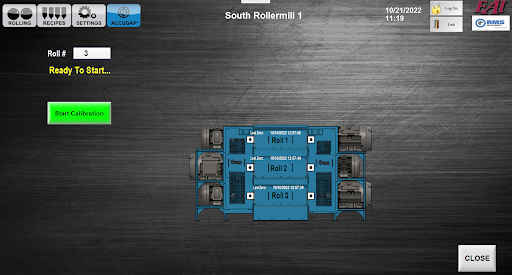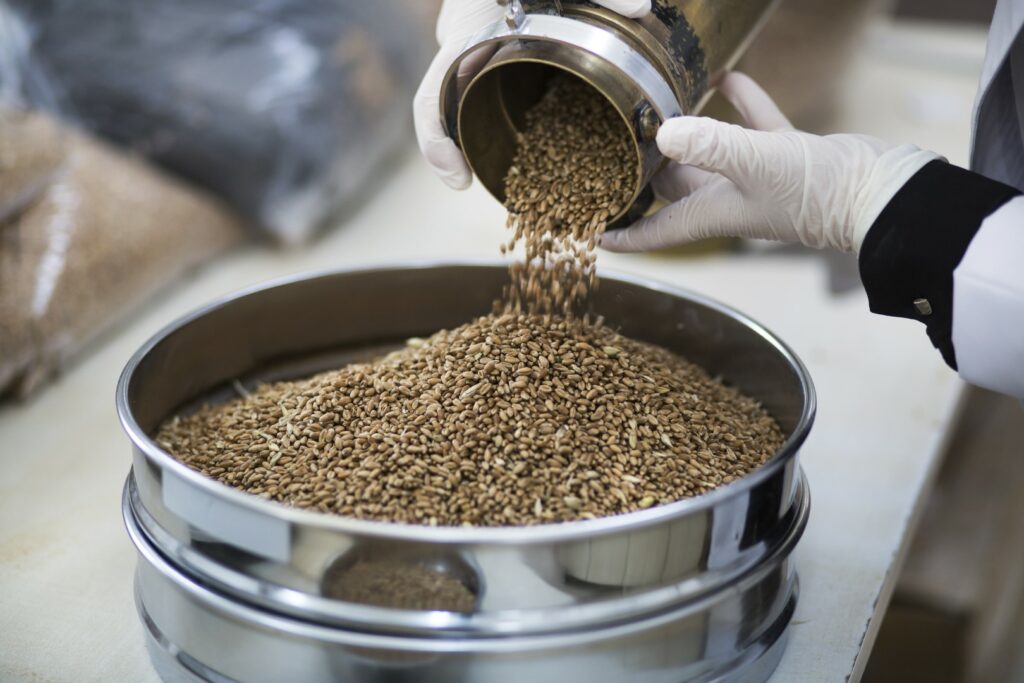Roller mills are the backbone of many sectors. The feed mill market alone was worth $853.9 million in 2022, and projections suggest it will reach $1.2 billion by 2031. Yet despite their economic importance, roller mill controls have been lagging when it comes to innovations. Vital industries have been relying on inefficient manual controls for too long.
In this post, we’ll explore different types of control systems, the importance of roll gap positioning, and how new innovations like AccuGap® are changing the game.
Types of Roll Gap Control Systems
There are two main types of roll gap control systems: Manual and automated.
Manual control systems
 The earliest roller mills were manual, and many still operate this way. In these, feed mill operators physically adjust gaps between rolls to ensure mills produce the right particle size.
The earliest roller mills were manual, and many still operate this way. In these, feed mill operators physically adjust gaps between rolls to ensure mills produce the right particle size.
This gets the job done, but it can result in inaccuracy & poor quality. Human error and variation between operators can mean the machine has an inconsistent output.
Manual control systems also require managers to spend more time traveling to and from the grinders to make adjustments, which makes operations less efficient.
Automated control systems
Automation has solved many of the most significant issues with manual control systems. Sensors can detect the gaps between rolls, meaning operators don’t need to be physically present to adjust them. Instead, specialized roller mill controls mean they can operate mills and change grind sizes from their control room. This increases efficiency and consistency, delivering the same grind size every time.
Automated roller mill control systems are particularly useful for operations that need to produce multiple grind sizes (such as when feeding different types of animals that need various grain sizes). Plus, automation has benefits like greater sustainability and improved operational safety.
The Importance of Roll Gap Positioning
 “[roll gap positioning] is important, again, for consistency in your grind and for making sure you’re creating a repeatable product.” – Josh Tracy, Research and Development at RMS Roller-Grinder
“[roll gap positioning] is important, again, for consistency in your grind and for making sure you’re creating a repeatable product.” – Josh Tracy, Research and Development at RMS Roller-Grinder
Automation alone doesn’t guarantee that a roller mill will be effective. High performance in roller mills primarily comes down to precision, so roll gap positioning is crucial. To achieve an accurate and consistent grind, rolls must be paralleled and zeroed.
The rolls need to return to the same setting after every operation, even if external factors knock them out of place. Automation makes this easier to achieve, but some systems offer more accurate roll gap positioning than others.
Introducing AccuGap®
 “AccuGap® is our paralleling and zeroing process that allows us to do it remotely and without human interaction. So a roller mill has to be parallel and zeroed in order to have an accurate and consistent grind. And if something gets knocked out of position, we need to make sure that those rolls get back into parallel with each other and zeroed out properly so that your gap is consistent, providing a quality and consistent grind as well.” – Josh Tracy
“AccuGap® is our paralleling and zeroing process that allows us to do it remotely and without human interaction. So a roller mill has to be parallel and zeroed in order to have an accurate and consistent grind. And if something gets knocked out of position, we need to make sure that those rolls get back into parallel with each other and zeroed out properly so that your gap is consistent, providing a quality and consistent grind as well.” – Josh Tracy
RMS’ AccuGap® offers a unique calibration system. RMS is the only roller mill manufacturer that independently adjusts the left and right sides, which helps to ensure consistency across the entire roll.
AccuGap®’s automatic gauge control rolling mills have sensors that can measure and position within 0.001”. Whenever the positioning moves slightly out of tolerance, the sensors detect it and ensure if too far out of tolerance, shut the incoming feed off. The sensors are also placed where the grinding actually occurs. This is superior to systems that measure at the point of adjustment, which can lead to inaccurate data.
With AccuGap®, it’s possible to achieve a repeatable product regardless of who is in charge of operating the machine. It also means the machine is less affected by foreign materials that may interfere with the rolls. For example, if a foreign object knocks the rolls out of parallel, AccuGap® can be run ensuring that the rolls are brought back to the proper position. This saves time and resources as an operator will be able to quickly parallel and zero the rolls, solving the issue.
Looking to the Future
Thanks to innovations like automatic gauge control rolling mills and AccuGap®, precise roll gap positioning has never been more achievable. Companies that take advantage of these new technologies can optimize their operations and remain competitive well into the future. Contact RMS Roller-Grinder today to learn about how you can take advantage of these opportunities today.
